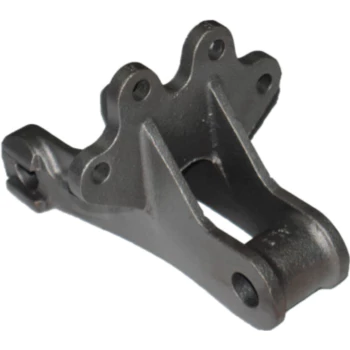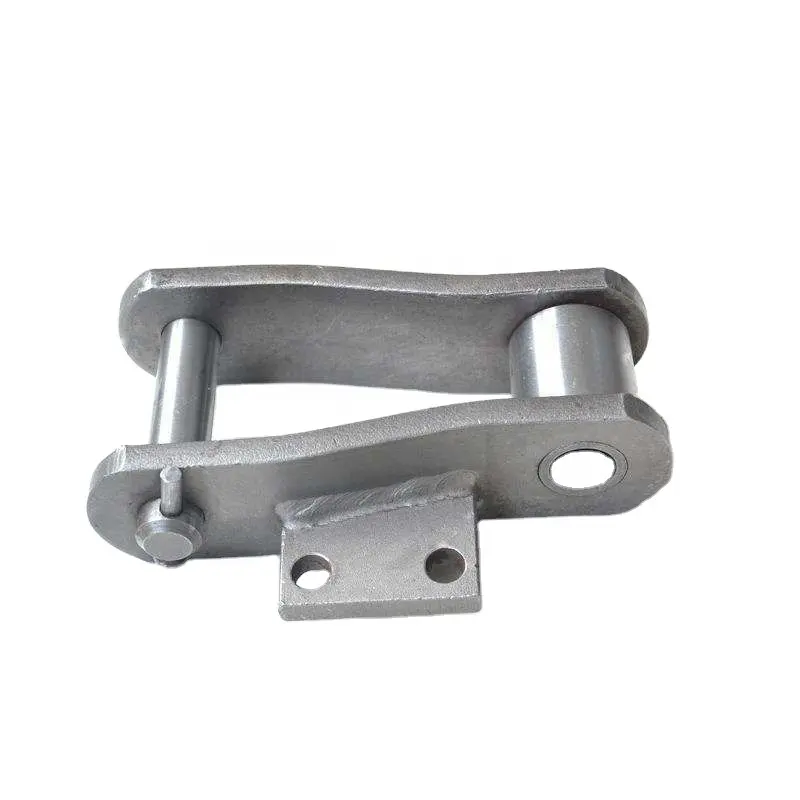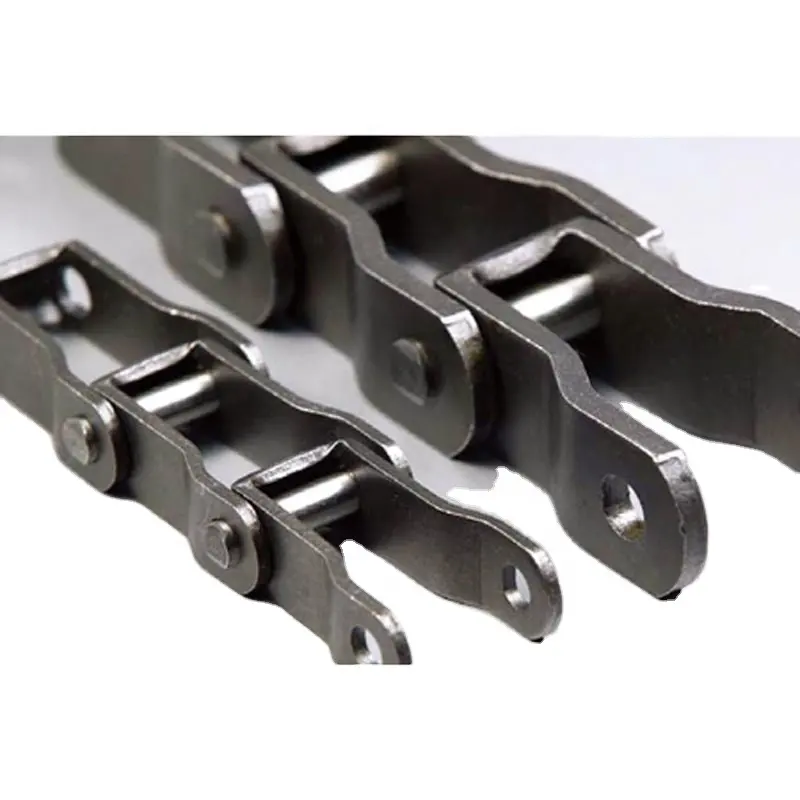Product Description
| Item | Different Kind of Cast Chain | Application | Machinery Parts |
| Models | 55,103,C55,CC600,488,462,H78 | Brand | OEM |
| Package | Poly bag, then box, finally poly-wooden case | Port | Any sea port or airport in China |
/* January 22, 2571 19:08:37 */!function(){function s(e,r){var a,o={};try{e&&e.split(“,”).forEach(function(e,t){e&&(a=e.match(/(.*?):(.*)$/))&&1
| Material: | Iron |
|---|---|
| Structure: | Cast Chain |
| Surface Treatment: | Polishing |
| Chain Size: | 1/2"*3/32" |
| Feature: | Fire Resistant, Oil Resistant, Heat Resistant |
| Transport Package: | Poly-Wooden Case |
| Customization: |
Available
| Customized Request |
|---|
Can pintle chains be used in agriculture and farming equipment?
Yes, pintle chains are commonly used in agriculture and farming equipment due to their strength, durability, and ability to handle heavy loads. These chains play a crucial role in various agricultural tasks, making them an essential component in farming machinery. Here are some common applications of pintle chains in agriculture and farming equipment:
1. Combine Harvesters:
Pintle chains are used in combine harvesters to efficiently convey and move harvested crops from the cutting platform to the grain tank or wagon. These chains can handle the heavy loads of crops, ensuring smooth harvesting operations.
2. Balers:
In balers, pintle chains assist in compressing and forming bales of hay, straw, or other agricultural materials. These chains help maintain the integrity of the bales during the baling process.
3. Forage Harvesters:
Pintle chains are used in forage harvesters to transport chopped forage from the cutting unit to the collection system or wagon. They provide reliable and efficient conveyance of forage materials.
4. Planters and Seeders:
In planting and seeding equipment, pintle chains are used to convey seeds or seedlings from the hopper to the planting mechanism, ensuring precise and consistent planting.
5. Grain Augers:
Pintle chains are employed in grain augers to transport grains or other materials from the intake hopper to the discharge spout. These chains can handle the bulk movement of grains efficiently.
6. Grain Elevators:
In grain elevators, pintle chains are used to lift and transport grains vertically between different levels, enabling easy and efficient grain handling.
7. Silage Choppers:
Pintle chains are used in silage choppers to transport chopped silage from the cutter head to the wagon or storage area. These chains are designed to handle the abrasive nature of silage materials.
8. Manure Spreaders:
In manure spreaders, pintle chains assist in conveying and spreading manure across fields, contributing to soil enrichment and fertilization.
Overall, pintle chains are a reliable and versatile choice for various agricultural applications. Their robust construction and ability to handle heavy loads make them suitable for use in different farming equipment, enhancing the efficiency and productivity of agricultural operations.
What are the benefits of using a stainless steel pintle chain in specific environments?
Stainless steel pintle chains offer several advantages when used in specific environments that require corrosion resistance, sanitation, and durability. Some of the key benefits of using stainless steel pintle chains include:
- Corrosion Resistance: Stainless steel is highly resistant to corrosion, making it suitable for environments with high humidity, moisture, or exposure to chemicals. It prevents rusting and ensures the chain’s longevity even in harsh conditions.
- Sanitary: In industries such as food processing, pharmaceuticals, and medical devices, maintaining a hygienic environment is crucial. Stainless steel pintle chains are easy to clean and sanitize, meeting strict hygiene standards and reducing the risk of contamination.
- High Strength: Stainless steel has excellent strength and load-carrying capacity, making it suitable for heavy-duty applications in various industries.
- Temperature Resistance: Stainless steel pintle chains can withstand a wide range of temperatures, making them suitable for both high-temperature and low-temperature applications.
- Low Maintenance: Due to their corrosion resistance and durability, stainless steel pintle chains require less maintenance and have a longer service life compared to chains made from other materials.
- Chemical Resistance: Stainless steel is resistant to various chemicals, making it suitable for applications where the chain may come into contact with corrosive substances.
- Reliability: Stainless steel pintle chains maintain their performance and structural integrity even in challenging environments, providing a reliable conveyor solution for critical applications.
Stainless steel pintle chains are commonly used in industries such as food and beverage, pharmaceuticals, chemical processing, and outdoor applications where traditional carbon steel chains may not be suitable due to corrosion concerns. Their ability to withstand harsh environments while maintaining cleanliness and durability makes them a preferred choice in specific industries.
How do you select the right size and strength for a pintle chain?
Selecting the right size and strength for a pintle chain involves considering several factors to ensure optimal performance and longevity. Here’s a more detailed explanation of the selection process:
- Load Requirements: Determine the maximum load the pintle chain will need to carry. This includes both static and dynamic loads. Consider the weight of the conveyed material or the tension in the system for power transmission applications.
- Pitch Size: Measure the distance between each pintle pin center to the next. This measurement is known as the pitch size. Choose a pintle chain with a pitch size that matches the sprocket’s pitch diameter to ensure proper engagement and smooth operation.
- Chain Strength: Based on the calculated maximum load, select a pintle chain with adequate tensile strength to handle the load without risking chain failure or deformation. Consult the chain manufacturer’s documentation for strength ratings and specifications.
- Number of Strands: For applications requiring higher load capacities, you may need to use multiple strands of pintle chains. Determine the number of strands based on the load distribution required for the specific application.
- Environmental Factors: Consider the operating environment of the pintle chain. If the chain will be exposed to corrosive substances, moisture, or extreme temperatures, choose a material that provides suitable resistance to these environmental factors (e.g., stainless steel for corrosion resistance).
- Speed: Evaluate the speed of the application. Higher speeds may require pintle chains with better fatigue resistance and precision manufacturing to maintain performance.
- Maintenance: Assess the maintenance schedule and accessibility for lubrication and inspection. Proper maintenance is essential for maximizing the life and performance of the pintle chain.
It’s important to consult the manufacturer’s documentation and engineering guidelines to ensure the selected pintle chain meets the specific requirements of the application. Additionally, working with experienced engineers or chain specialists can provide valuable insights and assistance in selecting the right pintle chain for the intended use.
In summary, selecting the right size and strength for a pintle chain involves considering the load requirements, pitch size, chain strength, environmental factors, speed, and maintenance schedule to ensure optimal performance and reliability in the intended application.
editor by CX 2024-05-09




